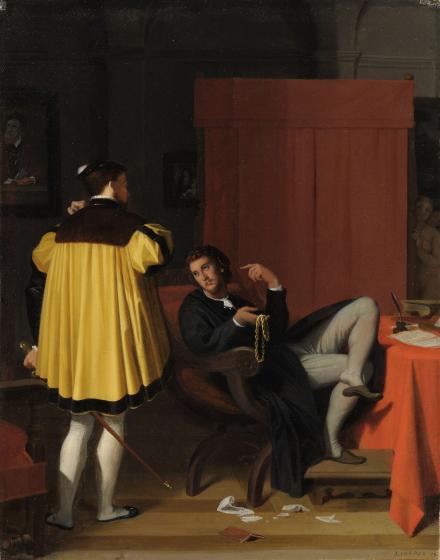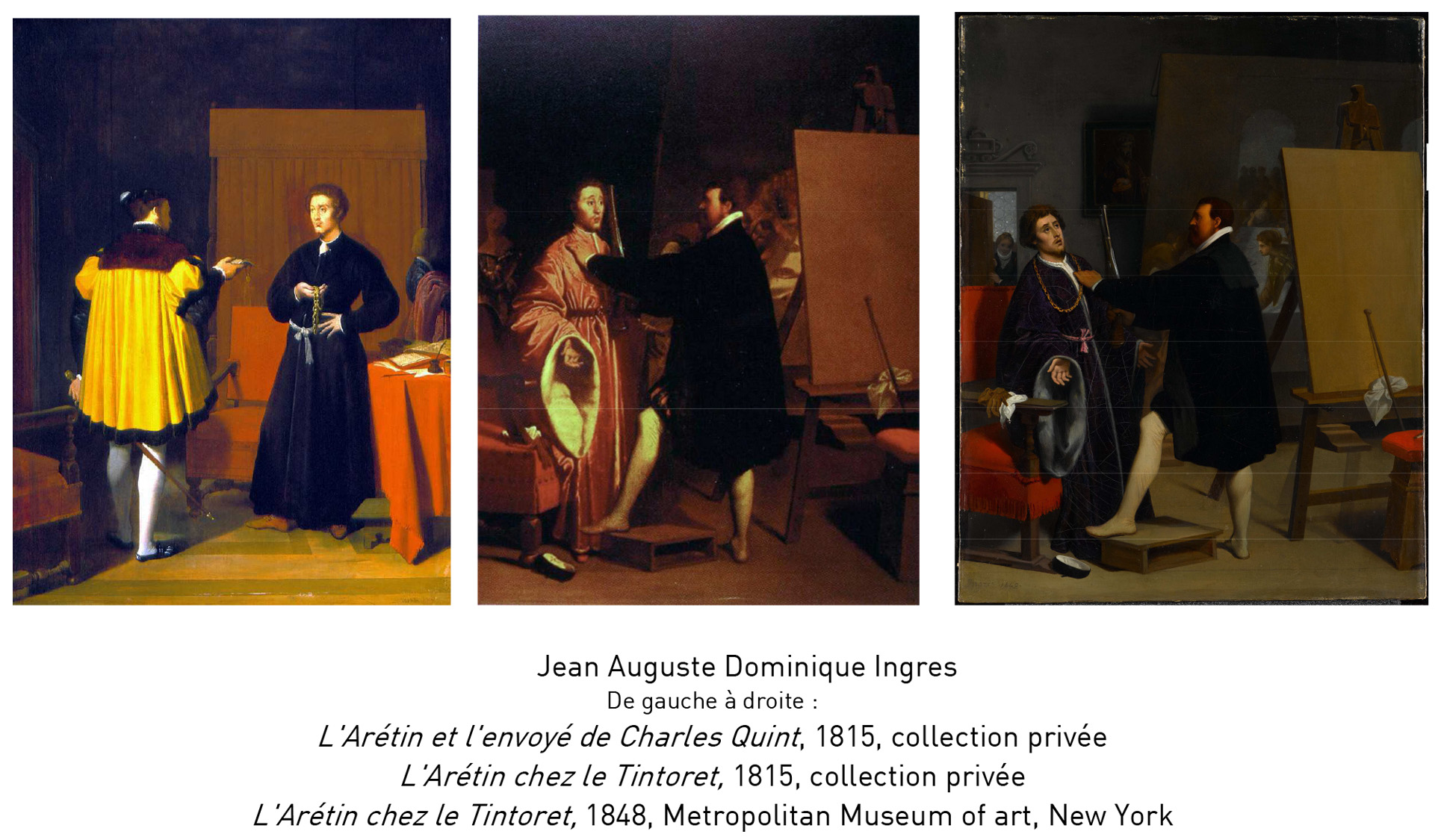Aretino and the Envoy of Charles V
Information sur l’artiste
Jean Auguste Dominique Ingres [Montauban, 1780 – Paris, 1867]

L'Arétin et l'envoyé de Charles Quint,1848.
Image © Lyon MBA - Photo Alain Basset
This small-format painting depicts a seemingly apocryphal episode of the life of Pietro Aretino (1492-1556). This famous Renaissance author based in Venice wrote pamphlets which struck fear into the hearts of the kings and powerful people of his time. In order to buy his silence after a military defeat, Emperor Charles V is purported to have sent him a gold chain, which Aretino, sitting nonchalantly in an armchair, is seen here disdainfully weighing in his hand. The imperial envoy has his sword in his hand, outraged by such insolence. Aretino's only response would indeed have been that this was "a very small gift for such great folly".
By choosing this subject, Ingres is making a statement about artists not being under the control of the powers that be. This composition shows the popularity of anecdotal illustrations of episodes from the lives of painters or writers from the past during the first half of the 19th century. Ingres plays with this anecdotal style, evoking the history of painting in the decor surrounding Aretino. He places a self-portrait by Titian, an artist he greatly admired, in the background on the left. On the opposite side, two young nude women draw back one of the curtains around the bed to observe the scene, in a reference to Aretino's licentious lifestyle: he appears to have been interrupted in the middle of a romantic encounter.
A pivotal work in the artist's career
In an unending quest for perfect forms, Ingres took particular pleasure in repeatedly reworking his paintings and the subjects which were important to him. He first illustrated the theme of Aretino and the Envoy of Charles V in 1815 during a stay in Rome, in a painting of the same dimensions (private collection) in which both male characters are portrayed standing and thus appear more rigid. The decor is plain, with walls devoid of paintings. Ingres created a pendant for the work: a painting depicting another episode in the writer's life, Aretino in the studio of Tintoretto (private collection).
Thirty years later, the painter decided to recreate these two themes in a very different way, which shows the radical evolution in his work over this period. A quest for formal beauty is present in the curve of the lines, the colour palette is being more subtle. The decor is highlighted by the three paintings on the wall, including a self-portrait of Titian, while the presence of the two nudes is a reminder of the artist's ongoing interest in the female body, and a precursor to The Turkish Bath (Paris, The Louvre), which he would complete at the age of eighty, in 1863.
1848
Oil on canvas
H. 43; L. 34 cm
Purchased in 2012 with support from the Club du musée Saint-Pierre, the Cercle Poussin, the FRAM programme – Regional fund for Museum Acquisitions (Ministry of Culture-DRAC, Rhône-Alpes Region) – and a crowdfunding campaign.
Inv. 2013.1.1






